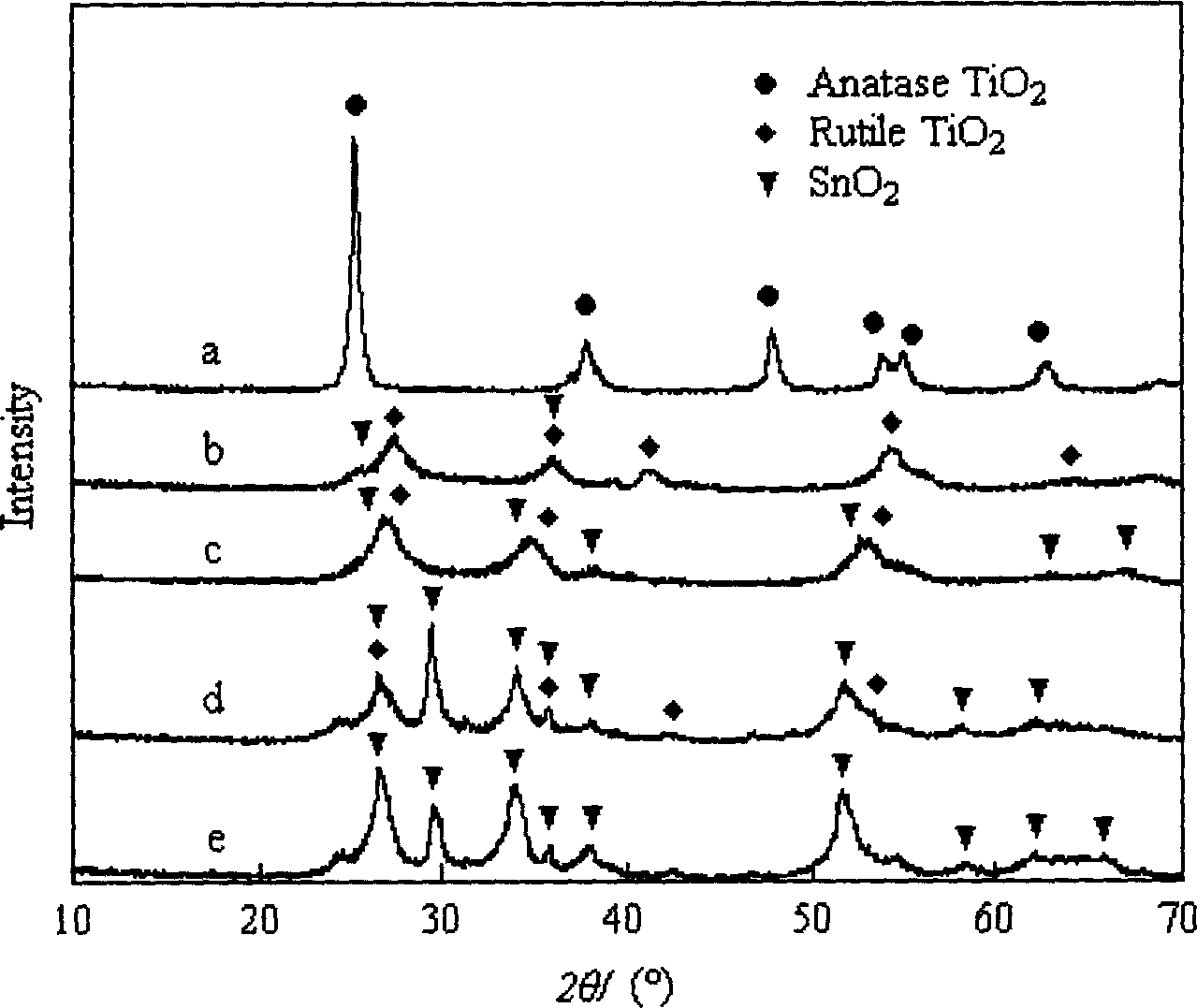Method for preparing Nano composite material of stannic oxide / titanium dioxide
A nanocomposite material, titanium dioxide technology, applied in the field of preparation of tin dioxide/titanium dioxide nanocomposite materials, can solve the problems of low photocatalytic efficiency and high recombination probability, and achieve high photocatalytic ability, low equipment requirements and stable performance
- Summary
- Abstract
- Description
- Claims
- Application Information
AI Technical Summary
Problems solved by technology
Method used
Image
Examples
Embodiment Construction
[0012] 1. The tin salt is tin protochloride (SnCl 2 2H 2 O), get 6.63g, be dissolved in the dehydrated alcohol of 40ml, disperse 30min in the ultrasonic disperser. The titanium salt is butyl orthotitanate (Ti(C 4 h 9 O) 4 ), get 10ml, pour in the 100ml beaker, and slowly pour in the ethanol solution of above-mentioned dispersed stannous chloride, put into magnetic stirrer and stir for 30min. Add 4-5ml deionized water dropwise, measure the pH value every 15 minutes, and control the pH value of the mixture to 9.0 with ammonia water. After the mixture was stirred under a magnetic stirrer for 2 hours, it was left to stand and aged at room temperature for 24 hours. Add 2 to 3 times the volume of distilled water to the aged gel, disperse in an ultrasonic disperser for 30 minutes, then filter and wash twice with a vacuum filter, and wash and filter once with ethanol in the same way. The filtered sample was baked at 100° C. for 12 hours to fully dry it to obtain a composite oxid...
PUM
 Login to View More
Login to View More Abstract
Description
Claims
Application Information
 Login to View More
Login to View More - R&D
- Intellectual Property
- Life Sciences
- Materials
- Tech Scout
- Unparalleled Data Quality
- Higher Quality Content
- 60% Fewer Hallucinations
Browse by: Latest US Patents, China's latest patents, Technical Efficacy Thesaurus, Application Domain, Technology Topic, Popular Technical Reports.
© 2025 PatSnap. All rights reserved.Legal|Privacy policy|Modern Slavery Act Transparency Statement|Sitemap|About US| Contact US: help@patsnap.com

